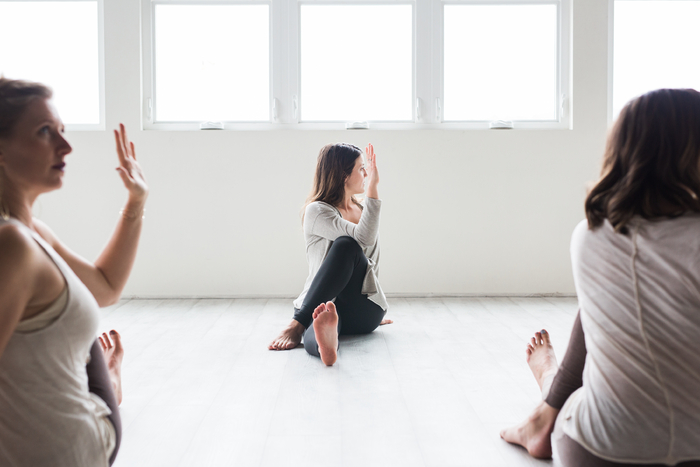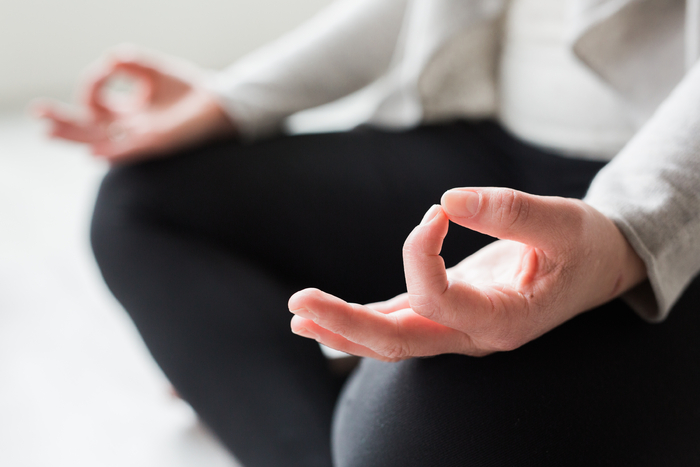Life can be busy and stressful. Between work, family, and social obligations, finding time to take care of yourself can be a challenge. But what if there was a way to improve your physical and mental health in just a few minutes a day? That’s where Yogic practices come in. Emerging evidence suggests that practising yoga offers a range of physical and mental health benefits that can help you feel better and manage stress. In this blog post, we explore 20 benefits of Yogic practices that are particularly relevant for both your physical and mental health.

Physical Health Benefits:
- Promotes parasympathetic nervous system dominance. The parasympathetic nervous system is responsible for the body’s “rest and digest” response, which helps to counterbalance the stress response. Practising yoga activates the parasympathetic nervous system, promoting relaxation and reducing stress.
- Reduces blood pressure. High blood pressure is a risk factor for heart disease, stroke, and other health problems. Research suggests that practising yoga can help to lower blood pressure, making it a valuable tool for maintaining cardiovascular health.
- Slows down heart rate. A fast heart rate can be a sign of stress or anxiety. Practising yoga can help to slow down the heart rate, promoting relaxation and reducing feelings of stress.
- Promotes deep and slow breathing, optimizing respiration. The way we breathe can have a significant impact on our physical and mental health. Practising yoga involves deep and slow breathing, which optimizes respiration and can help to reduce feelings of anxiety and stress.
- Increases brainwaves associated with relaxation and sleep. Yoga has been shown to increase alpha brainwaves, which are associated with relaxation and sleep. This can help to promote better sleep and reduce feelings of stress and anxiety.
- Encourages muscle relaxation and flexibility. Many yoga poses involve stretching and holding different muscle groups, which can promote relaxation and increase flexibility. This can be particularly beneficial for those who spend a lot of time sitting at a desk or engaging in other sedentary activities.
- Supports optimal digestive health. The practice of yoga involves gentle twists and stretches that can help to promote healthy digestion. This can be especially helpful for women who experience digestive issues due to stress or poor dietary choices.
- Supports endocrine function and promotes hormonal balance. The endocrine system is responsible for regulating hormones, which play a critical role in many bodily functions. Practising yoga can support optimal endocrine function and promote hormonal balance, which can help to alleviate symptoms of PMS and menopause.
- Promotes healthy excretions. Practicing yoga can help to stimulate the lymphatic system, which is responsible for removing waste and toxins from the body. This can promote healthy excretions and improve overall health and wellbeing.
- Improves joint range of motion. Many yoga poses involve gentle stretching and movements that can help to improve joint range of motion. This can be especially beneficial for women who experience joint pain or stiffness due to aging or other factors.
- Improves posture. Poor posture can contribute to a range of physical health problems, including back pain and neck pain. Practising yoga can help to improve posture by strengthening the muscles that support the spine and promoting better alignment.
- Supports the maintenance of a healthy weight. Maintaining a healthy weight can be a challenge for busy women. Practising yoga can help to support healthy weight management by increasing metabolism and promoting physical activity.
- Increases energy and vitality. Practicing yoga can help to increase energy and vitality by promoting better circulation and oxygenation of the body. This can help women feel more alert and energized throughout the day, even during times of stress or fatigue.
- Promotes immune function. The immune system plays a critical role in protecting the body against illness and disease. Practising yoga has been shown to promote immune function, making it a valuable tool for maintaining overall health and wellbeing.
- Improves balance and reduces falls risk. Yoga can help to improve balance and reduce the risk of falls, which is especially important as we age.

Mental Health Benefits:
- Helps to calm the mind, reducing symptoms of anxiety, depression, and anger, and promoting a greater sense of inner peace and tranquillity.
- Promotes introspection and self-awareness, fostering personal growth and development.
- Encourages the mind/body connection, which may be helpful for those coping with a variety of mental health conditions.
- Supports improved cognitive function, which may increase learning efficiency, concentration, focus, and memory.
- Provides a supportive and nurturing environment for self-exploration and healing, helping you to develop greater self-compassion and acceptance.
Improve Your Physical and Mental Health With Just a Few Simple Poses.
- Corpse Pose (Savasana): This pose is great for promoting relaxation and reducing stress. Lie on your back with your arms at your sides, palms facing up, and allow your body to completely relax.
- Child’s Pose (Balasana): This pose can also help to promote relaxation and reduce stress. Start on your hands and knees and sit back on your heels with your arms stretched out in front of you. Rest your forehead on the mat and breathe deeply.
- Downward Facing Dog (Adho Mukha Svanasana): This pose can help to improve circulation, increase energy and vitality, and improve joint range of motion. Start on your hands and knees, then lift your hips up and back, pressing your heels towards the floor.
- Warrior II (Virabhadrasana II): This pose can help to improve posture and strengthen the muscles that support the spine. Stand with your feet wide apart, then turn your left foot out and your right foot in slightly. Bend your left knee and extend your arms out to the sides, looking over your left hand.
- Tree Pose (Vrikshasana): This pose can help to improve balance and reduce the risk of falls. Stand with your feet together and place your right foot on your left thigh. Press your foot into your thigh and balance on your left foot, hands at heart center.
- Cat-Cow Stretch (Chakravakasana): This sequence involves moving between two poses – Cat Pose and Cow Pose – which can help to promote flexibility and relieve tension in the spine. Start on your hands and knees, then round your spine up towards the ceiling (Cat Pose) and then lower your belly towards the floor, arching your spine (Cow Pose).
- Sun Salutation (Surya Namaskar): This sequence is a great way to warm up the body, improve circulation, and promote energy and vitality. It involves moving through a series of poses, including Downward Facing Dog, Plank Pose, and Upward Facing Dog.
Remember to always listen to your body and modify the poses as needed. It’s always a good idea to consult with a qualified yoga teacher before starting a new practice.

Elevate Your Yoga Practice With These Beginner-Friendly Tips.
- Start with a beginner-friendly class or video: Look for classes or videos that are specifically designed for beginners. This can help you to learn the basics of yoga and avoid frustration or injury.
- Use props: Props such as blocks, straps, and blankets can help to make yoga poses more accessible, especially for beginners. Don’t be afraid to use them and modify the poses to fit your individual needs.
- Listen to your body: It’s important to listen to your body and avoid pushing yourself too hard. If a pose feels uncomfortable or painful, back off or modify it. Yoga should feel good and be enjoyable.
- Consistency is key: Try to practice yoga regularly, even if it’s just a few minutes a day. Consistency can help you to develop your practice and experience the benefits of yoga more fully.
- Be patient: It takes time to develop flexibility, strength, and balance. Don’t expect to master every pose right away. Be patient with yourself and enjoy the journey.
- Breathe deeply: One of the key aspects of yoga is deep breathing. Focus on breathing deeply and fully during your practice. This can help to calm the mind and promote relaxation.
I completely understand that time constraints and access to yoga studios can be common barriers for many people looking to start practising yoga. But you don’t need a lot of time or fancy equipment to begin your yoga journey. Even just a few minutes a day of simple stretches or breathing exercises can have a big impact on your physical and mental well-being. And if you don’t have access to a yoga studio, there are plenty of online resources available, from free videos on YouTube to paid subscriptions to dedicated yoga apps. With a little bit of creativity and openness to trying new things, you can easily incorporate yoga into your daily routine and start reaping the many benefits that it has to offer.
So, if you are a busy and stressed and looking for a way to reclaim your sense of well-being and vitality, consider exploring the world of yogic practices. The journey towards greater health and happiness awaits you. Namaste.
[…] dominant outside your door, as well as within you, will be an essential factor for balancing your mental health and keeping your nervous system functioning well during the […]
[…] ways and offer distinct advantages. By understanding the specific techniques, philosophies, and benefits of each practice, you’ll be better equipped to decide whether to incorporate stretching, yoga, or a […]
[…] not to eliminate stress entirely but rather to provide you with tools to reduce its impact on your mental and physical health. With this in mind, let us explore seven strategies for managing stress and cultivating a happier, […]